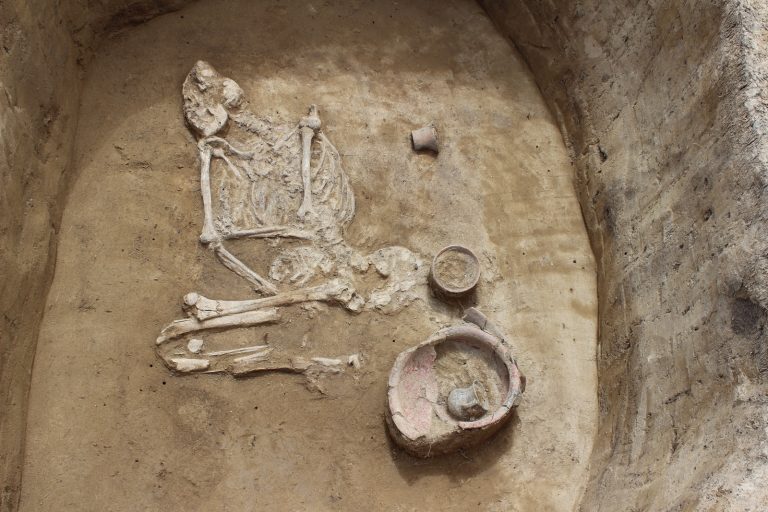Brno archaeologists have recently uncovered a new prehistoric burial ground in the Vyskov district, containing 23 tombs. It is the third historic cemetery reported by the organisation this month. Photo credit: Archiv UAPP Brno.
Brno, Aug 3 (BD) – During the last two years, archaeologists from the Brno Institute of Archaeological Conservation [“Ústav archeologické památkové péče Brno”, UAPP Brno] have uncovered dozens of archaeological sites near the I/50 road in Holubice, a village in the Vyskov district of South Moravia. The most interesting was a partial skeletal burial ground from the Late Stone Age, containing 23 tombs. The graves were found with skeletons intact, which is not always the case.
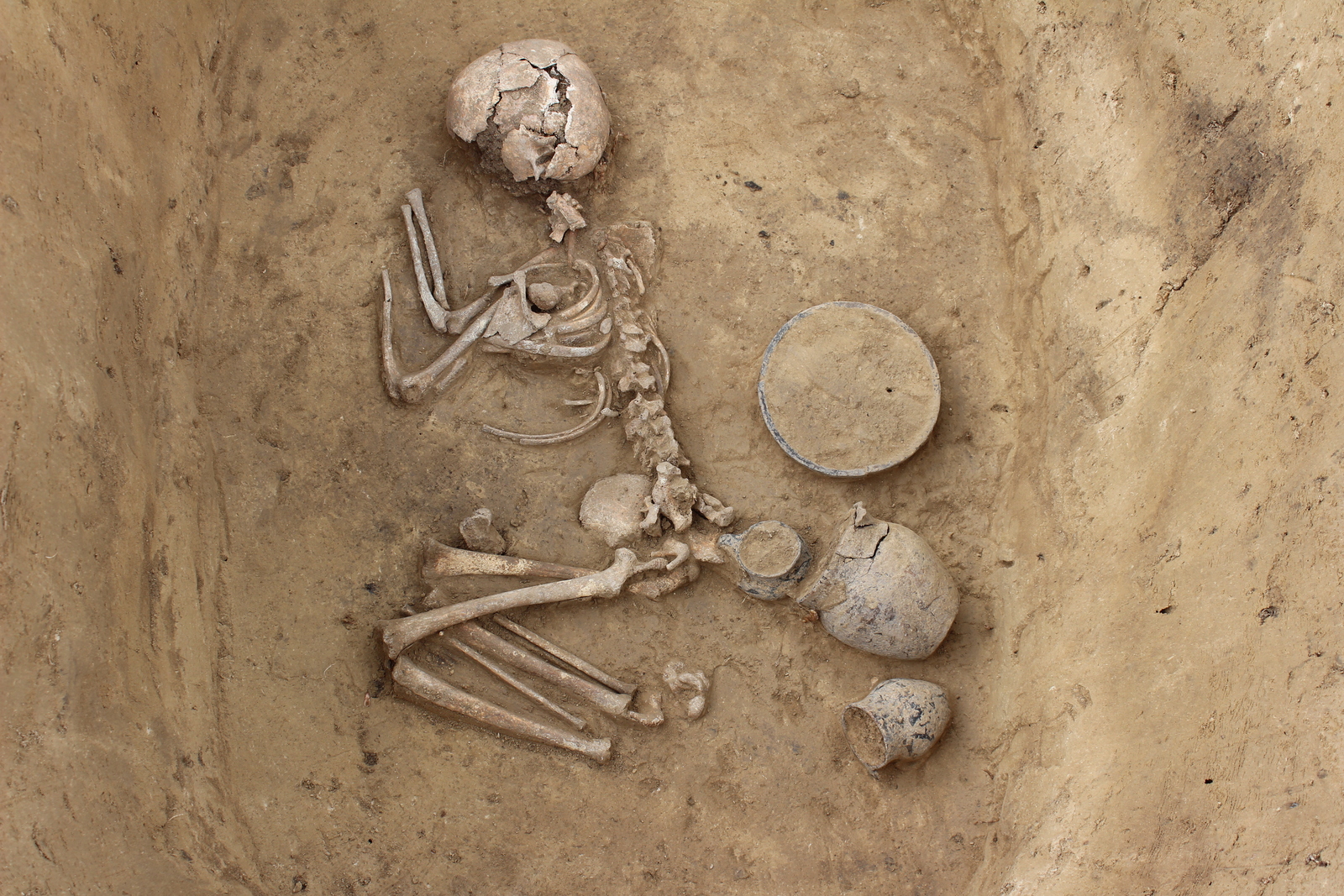
In the twenty tombs examined, excavators found typical pottery in the form of visibly decorated cups and bowls, as well as small metal objects and arm guards: “An essential part of archery equipment,” said archaeologist Blanka Mikulková.
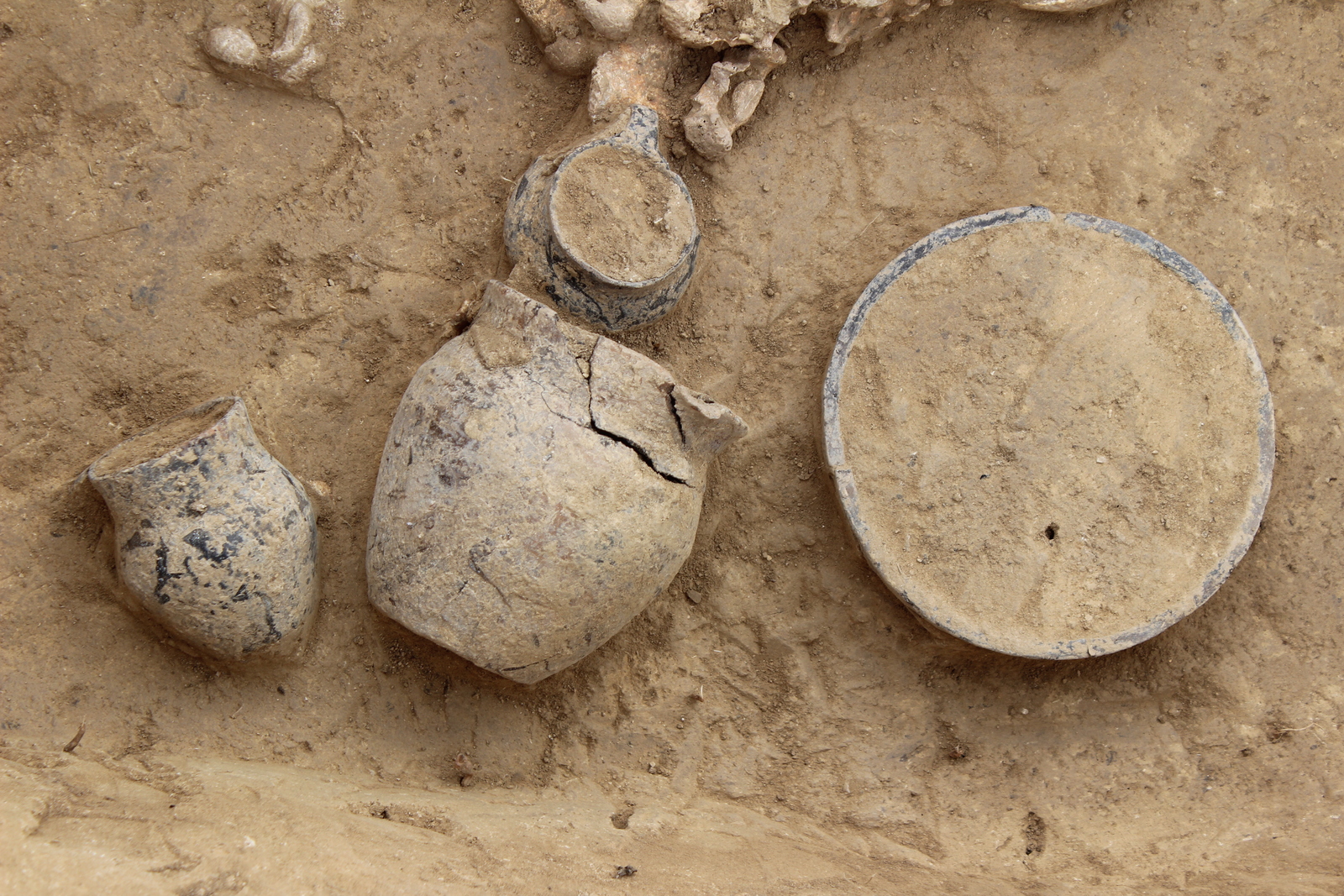
In addition to the burial grounds, the team of archaeologists also excavated two extraordinarily large clay pits from the Late Bronze Age.
It’s not unusual for UAPP Brno to find skeletal graves. Just this month, the organisation have published their findings on three such excavations, including the Holubice one.
UAPP Brno usually investigates sites that are already being excavated due to construction.
Hustopeče
In Hustopeče, Břeclav district, the UAPP Brno team located over 100 buildings from the Early Bronze Age, including a small burial ground consisting of 14 graves. The graves, from the Únětice archaeological culture period at the start of the Central European Bronze Age (roughly 2300–1800 BC), were poorly reserved and, according to archaeologist Richard Bíško, in some cases had probably been robbed.
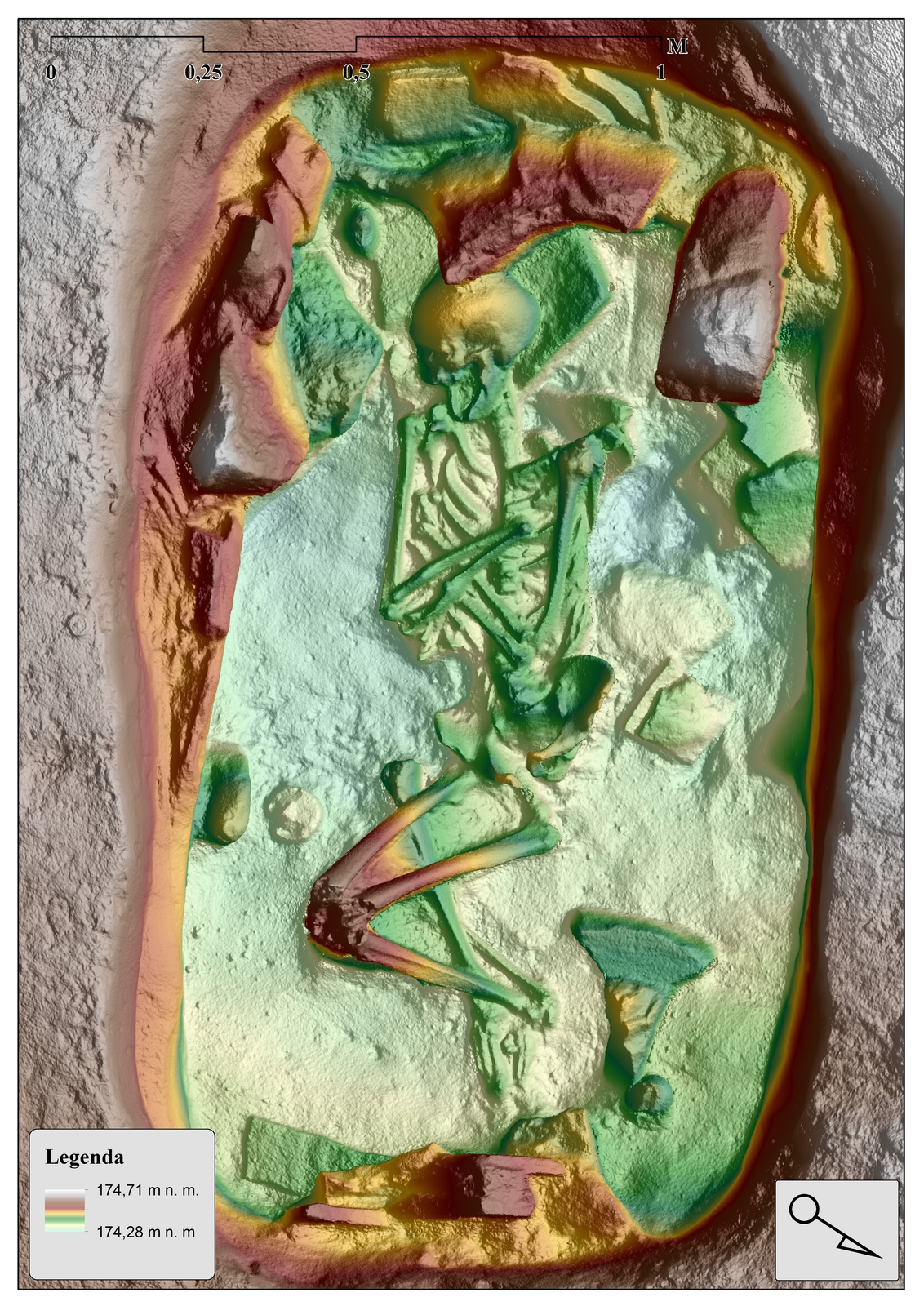
The grave of a woman was also discovered in this area, but according to the findings, said Bíško, it probably dates from the 19th century. The woman was probably murdered.
Znojmo
In the city of Znojmo, a small archaeological study was carried out in the courtyard of a house on Přemyslovců Street. Beneath the historic sheet paving, just below the surface, a medieval formation was uncovered where a simple children’s grave from between 950 and 1200 was found, with the skeleton of a 7-8 year old child.
In addition to a few fragments of ceramic vessels, a collection of nine bronze earrings was discovered near the skull in the tomb pit. The grave is probably related to the burial ground uncovered in 2009 on nearby Václavské Náměstí.
Malešovice
In June, UAPP Brno published their discoveries from Malešovice in Brno-Venkov district, where they examined more than 15 archaeological objects scattered sparsely around an area that was being excavated for construction, allowing the archaeologists to inspect the grounds.
According to Ivan Čižmář, most of the objects are from the Unetic Bronze Age (ca. 2000–1800 BC).
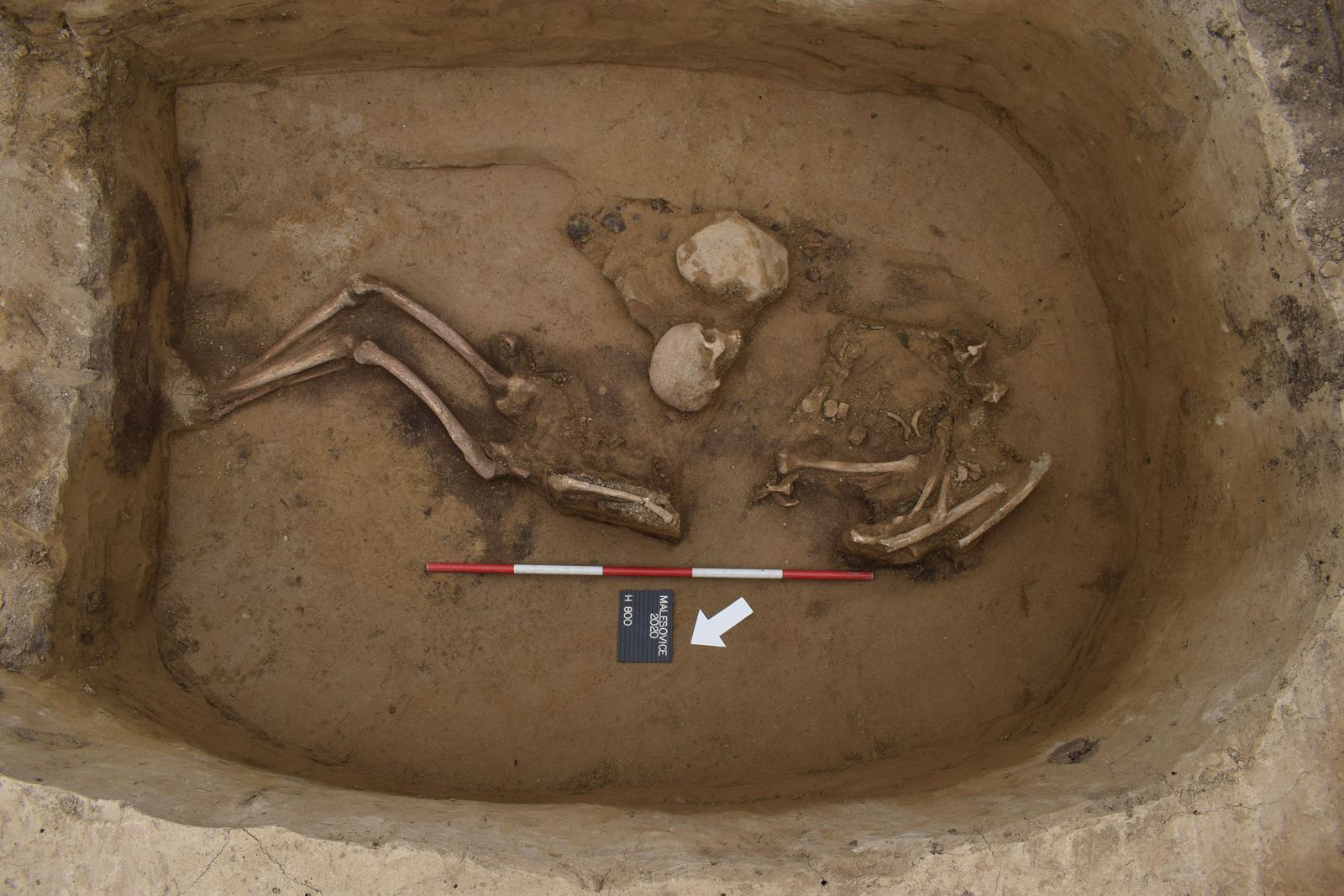
A grave from the Unetic culture was also discovered, only identified thanks to a ‘robbery shaft’ made of dark clay. Inside the tomb, the remains of the deceased were no longer in the anatomical position, which Čižmář said suggests that the grave was robbed after the soft tissues decomposed. According to a preliminary anthropological analysis, the remains were those of an adult man. A green colored print around the skull suggested that the man had likely worn a crown.
Read more and view all photos of their discoveries on the UAPP Brno website.


